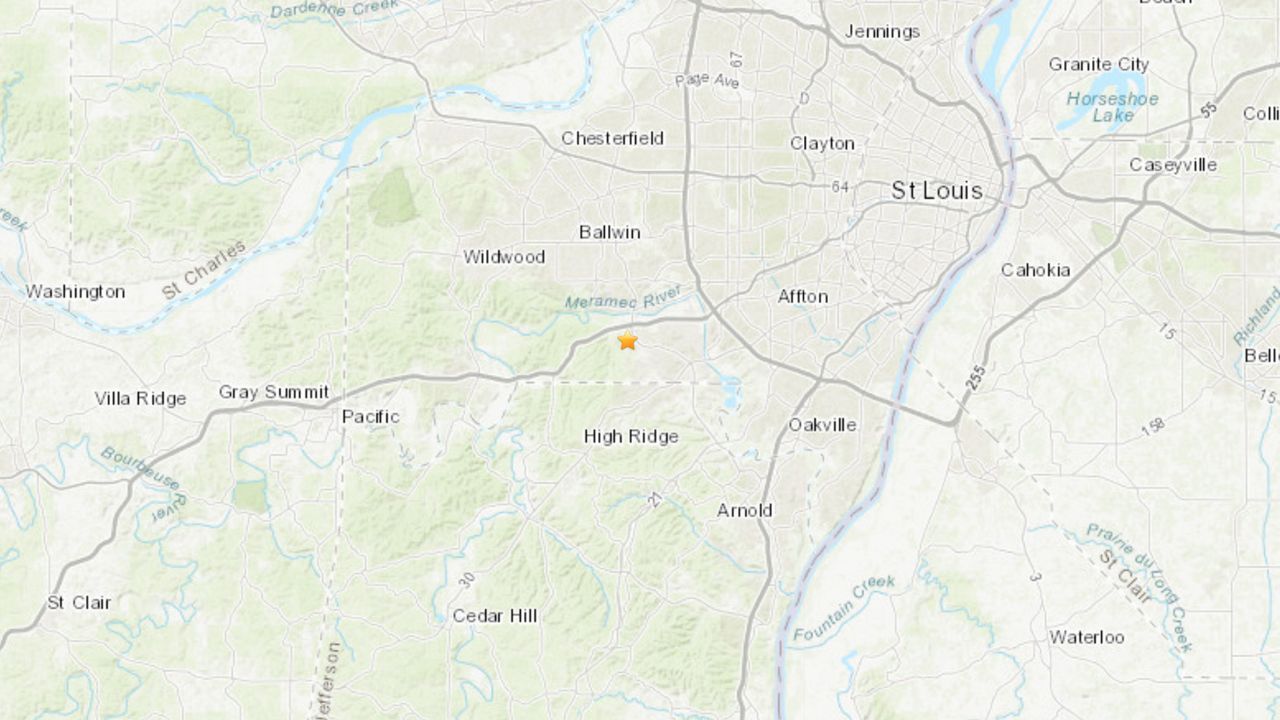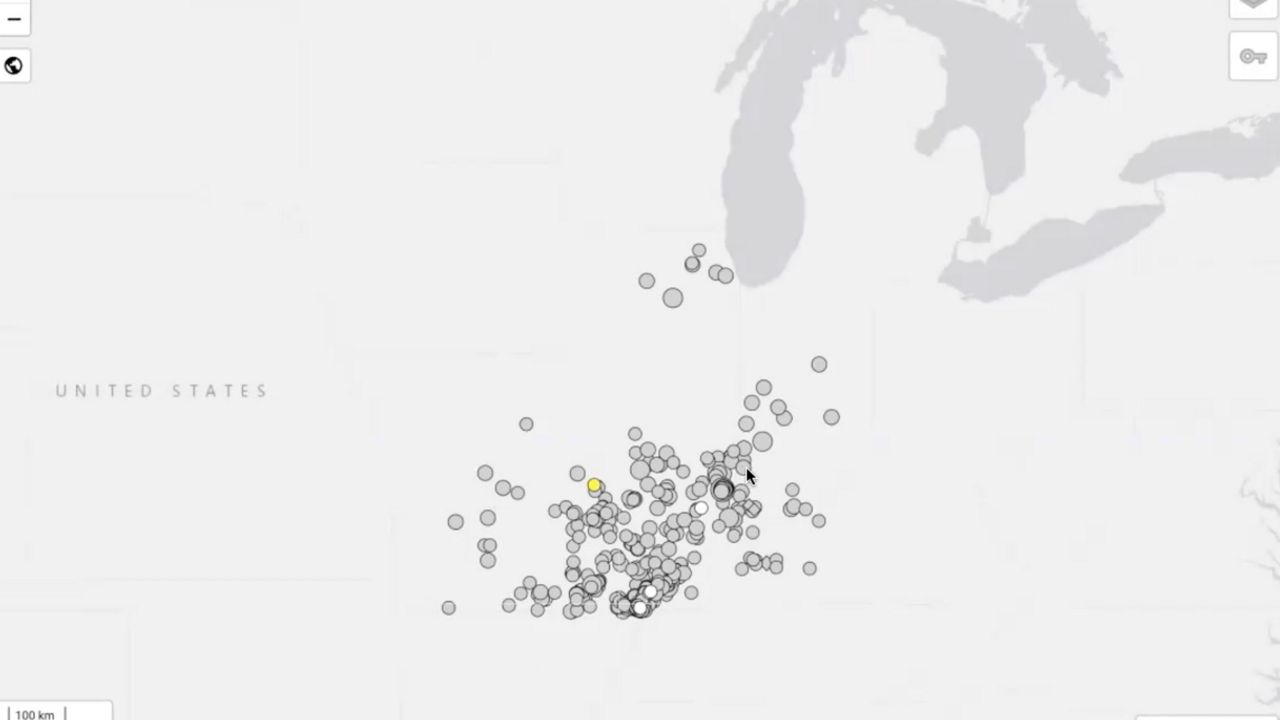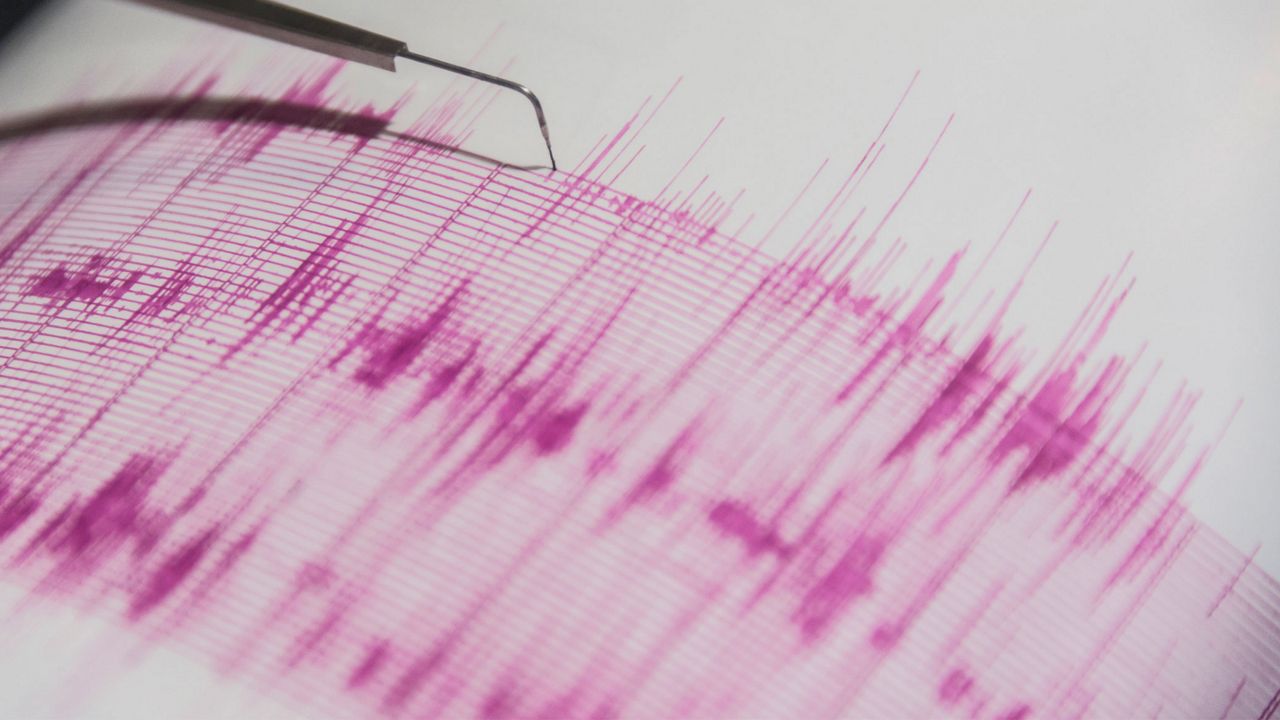ST. LOUIS – A magnitude 2.8 earthquake rattled the St. Louis County area near Valley Park on April 29. Is the seismic activity in this area something that should concern us? The research may surprise you.
It was around 5:30 p.m. on April 29 when the ground seemed to shake. Amy Blumenfeld, of St. Louis County, was standing in her kitchen and noticed her 5-pound dog, Capulet, a Bichon Frise, just sort of fell over onto the floor. Items on top of her fridge rattled, and she heard what sounded like a pop.
She questioned what it was, thinking maybe a transformer blew somewhere in the area, but she didn’t lose power. Turns out it was a 2.8 magnitude earthquake with an epicenter just south of Valley Park, Missouri.
“I live very close to Valley Park, where the shock was reported to be felt so strongly. This was the first earthquake I’ve ever actually been able to feel, even though I’ve been in town when others have been reported. Neighbors immediately came outside on porches/decks to look and see what happened.”
Earthquakes occur in the St. Louis region, but not all that often. This quake was part of the Illinois Basin–Ozark Dome, which includes Missouri, Illinois, Indiana, Kentucky and Arkansas and extends to the more active New Madrid Seismic Zone, located closer to the bootheel of Missouri.

Social media was a buzz with posts of “did you feel the shaking?” Or even ring cameras that captured the slight movement of household items.
Kenny Stempel, of Chesterfield Valley, in St. Louis County, posted on Facebook “Ahhhhhh! Earthquake!!! Just kidding, it was only a 2.5.” Having moved here from Los Angeles 2.5 years ago, he’s encountered his fair share of quakes, but unlike the 6+ magnitude quakes of California, this one was quite minor.
Californians may have chuckled at the magnitude of this quake, but midwestern quakes differ from western quakes. The quakes don’t always occur along a fault. They are shallower and with a shallow quake, felt a longer distance, up to 10 times farther than their western counterparts.
Washington University in St. Louis geophysics professor Michael Wysession explains that unlike oceanic earthquakes, land earthquakes don’t go deep. That’s because the pressure prevents them.
The earthquakes that occur in the middle of continents, like this one, happen in part because of the North American plate drifting westward, around an inch to inch and a half per year. He used an analogy of an old wooden ship moving along the waves.
“As it goes, you hear the creaking and the groaning of the boards and the mast and that’s exactly what North America does. We’re moving westward and the mantle is lumpy and as this hundred-mile-thick sheet of rock moves westward across the mantle, it flexes and bends a little bit.”
He adds, “This quake could also be attributed to a weak spot on the North American plate, which is common as these plates have drifted together and apart for millions of years.”
Activity in this area, including the New Madrid Seismic Zone, is quite new, only around 200 years.
“First seismic activity was 1811 and 1812 in New Madrid where there were three big ones… 6.7, 6.8, 7.2. However, the magnitudes are estimated because the first seismometer recording of an earthquake didn’t actually happen until 1889.”
Information from local newspapers discussing the shaking and damage helped scientists approximate the magnitudes.
Asked whether fracking can be a reason for the minor earthquakes, Wysession says there is no fracking that occurs in the St. Louis area now.
Fracking was common in northern Arkansas and the cluster of quakes in Arkansas was the first discovered as fracking-related, not the actual fracking part, but the pumping of the wastewater that caused thousands of minor quakes.
Whether we can expect more shaking in the St. Louis region soon, he explains, “Earthquakes tend to follow a fractal dimension of one, for the way we determine the magnitude scale." He used New Madrid as an example.
"For the last 150 years, we’ve had one magnitude 6, 10 magnitude 5s, roughly 100 magnitude 4s. If you come up to St. Louis region, where that earthquake occurred near Valley Park, we had only had three other earthquakes in that region over the last 40 years and they were all around 2.8,” he explained.
Based on these statistics, we can expect a minor quake once every decade.

This earthquake happened when homeowners opting for earthquake insurance in the state are at an all-time low. Premiums typically are about $200-$300 a year in our area.
When asked if earthquake insurance is something folks should purchase in this region, Wysession said, “The risk is low.”
“Insurance is all about how comfortable you are with risk," he added. "It’s the sleep test. Can you sleep at night?”
He points out that back in 1811 and 1812, “there were about 5,000 people living in St. Louis. Loose chimneys in St. Louis fell over, yet there was almost no damage in towns half the distance, like St. Genevieve, which should have shaken more violently, yet not a pane of glass was broken.”



